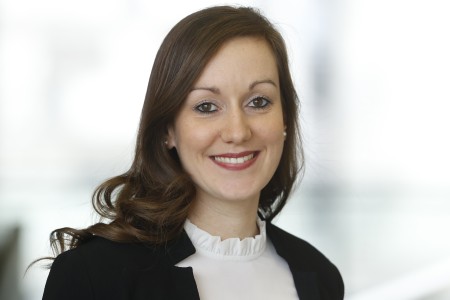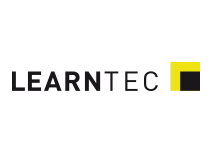Direct Knowledge Transfer between Boomers and Gen Z
DB Training, Learning & Consulting
Karlsruhe/Frankfurt a.M., April 2025 - DB Training, Learning & Consulting is part of the DB Group and a provider of training and consulting services in the European mobility and logistics market. For more than 30 years, DB Training has been offering tailor-made qualifications for around 290,000 learners every year. Product and project manager Julia Harting will be speaking with Inga Geisler from Human.digital.learning at the LEARNTEC Congress on Tuesday, May 6 at 3 p.m. about “ How Boomers to Gen Z can learn effectively together”.

How important is collaborative learning among the generations in your organization?
Julia Hartinger: Knowledge management plays a significant role in the DB Group. The objective is to learn more and more with and from each other: e.g. boomers pass on their knowledge to younger generations at an early stage, as sustainably and continuously as possible, and not just before retirement. This guarantees that the valuable knowledge and practical skills of those with experience are not lost and are retained by the organization.
A learning-friendly working atmosphere and an appropriate environment can only be created if all those involved have an understanding for each other, an inner attitude and the resulting behaviour towards each other (TR-TN and TN-TN). To achieve these goals, the learning coaches from DB Training, Learning & Consulting have the responsibility of raising awareness among the different generations and preparing them for the challenge.

What special requirements do training courses have to meet?
Inga Geisler: To ensure that the generations can learn with and from each other, we create positive environments that are beneficial to learning, that offer space for creativity and therefore enable individual and sustainable learning for the participants.
This requires, for example:
- Modern training concepts that enable activation, interaction and collaboration among participants and hence promote self-awareness and sustainable learning. We have found that allowing time for exchange (not just during breaks) is a key success factor.
- A versatile portfolio of methods, so that a wider (generational) diversity can also be addressed and “served” individually.
- Well-qualified trainers who embrace a learning-oriented approach and act as role models when dealing with different generations.
- Appropriate supervision ratio in terms of the balance between trainers and learners. We work with trainer tandems and a limited number of participants in line with the learning concept. If organizationally possible, we also pay attention to a mix of generations.
What is the role of individualized learning?
Julia Hartinger: Based on our experience, a mixture of individualized learning and the group experience is what makes learning successful.
Individualized learning enables self-determined learning (autonomy), which in turn is a decisive factor for the development of intrinsic motivation. Those who are intrinsically motivated can enter a state of flow while learning. This enables them to experience competence. During training, for example, our learners can often choose whether they work on a task by themselves or in a small group or decide which topic interests them more. And they take on moderating tasks in the training situation to test and expand their skills individually.
For us, “individualized learning” does not necessarily mean that learners work on content on their own. That only happens mostly in preceding self-learning phases. Instead, we see repeatedly that social involvement plays an important role in intrinsic motivation.
Learning theories also state that learning for the sake of learning is not very useful or sustainable. Again, this means that we promote individualized learning according to the “pull principle”, e.g. with the launch of the learning station this year, DB's new central learning experience platform. This platform ensures that learners learn exactly what they want and need - when and where is best for them. It is of course important that learners are also willing to do this: Although the theory may seem correct and reasonable, older learners are often overwhelmed by it in practice. The “learning mindset” remains strongly anchored in the “push principle” in this case. This needs to be gradually overcome by experiencing “new learning”.
Does collaborative learning between boomers and Gen Z also have effects in terms of knowledge transfer?
Inga Geisler: This is “pure” knowledge transfer in both directions. If the boomers are willing to develop themselves further and at least give new approaches a chance, they will benefit considerably from the ideas of Gen Z. Again, it is important to be open to learning from the experienced generation and to treat them with respect. Training situations can initiate further networking and a willingness to exchange ideas. After all, there is usually no time to do this in everyday practice due to the high workload.
In which fields/work areas do you use this form of learning?
Julia Hartinger: The fact that generations learn with and from each other is not what we call a special form of learning. It happens every day at DB and at DB Training in the context of work and training. For instance, in addition to the learners, our learning mentors also belong to different generations. In most cases, this automatically results in a cross-generational learning group.
Are you happy with the results?
Inga Geisler: Deutsche Bahn has been working intensively on cross-generational learning for some time now - and not just in the training environment. We have noticed that it is important to address the topic and raise awareness. We believe that it is not a given that people from different generations will benefit from each other - we actively promote this. We are on the right track.

